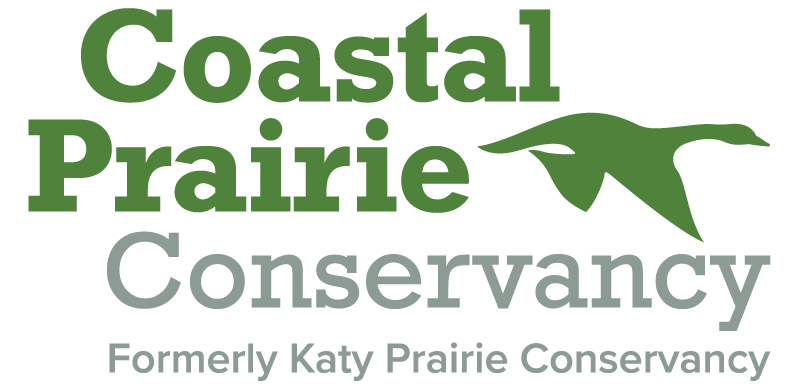The Bullet Train
Texas Central High-Speed Railway, a private Texas Company, is working to bring high-speed rail between Dallas and Houston. The train can travel up to 205 miles per hour and will be capable of bringing people from Houston to Dallas in 90 minutes. In October 2014 the Coastal Prairie Conservancy staff attended public scoping meetings where the proposers of the high-speed rail line discussed the project and invited public comment, and we have continued to be involved as the process has advanced from the consideration of nine possible routes to the route that was presented in the Draft Environmental Impact Statement released in December 2017 (See Dallas to Houston High-Speed Rail Draft Environmental Impact Statement.) The proposed route would pass within half a mile of the northern boundary to the Coastal Prairie Conservancy’s Warren Ranch Preserve. Warren Ranch is the largest working cattle ranch within Harris County and is majority-owned by the Coastal Prairie Conservancy.
The area nearest the rail line includes the Warren Lake and the Matt Cook Wildlife Viewing Platform. The Wildlife Viewing Platform at Warren Lake is open to the public seven days a week and is valued by birders and other visitors enjoying the natural setting and serenity of the lake, prairie, and wildlife. The Coastal Prairie Conservancy noted concerns regarding the rail route, but also the proposed maintenance facility proposed to be located just northeast of the Coastal Preserve property, which was planned to occupy a footprint of approximately 120 acres and would have been operated at night, likely producing light pollution which can affect bird migration routes. We are pleased that the project planners have since indicated that the maintenance facility will be situated at a location more distant from the Katy Prairie Preserve.
The Coastal Prairie Conservancy has noted concerns regarding potential impacts of the project:
Disturbance to Public Visitors to the Katy Prairie Preserve. Visitors to the Katy Prairie Preserve’s Warren Lake and the Matt Cook Wildlife Viewing Platform would be disturbed by the noise, vibration, and visibility of an elevated train. The disturbance of wildlife at Warren Lake not only affects the birds and other animals that frequent the area, but also is a loss to the visitors who come to observe them from the public viewing platform.
Wildlife Disturbance on the Katy Prairie Preserve. Warren Lake teems with wildlife year-round, and many waterfowl gather at the north shore, which is the area closest to the proposed route. The Katy Prairie is in the Central Flyway, and the over 20,000 acres that the Coastal Prairie Conservancy has protected have been designated a Global Important Bird Area by National Audubon. The proposed rail route is directly in the path of a birds’ northern and northeastern flyway approach to the lake. Many birds of the prairie are sensitive to light, sound, and vibration and may be driven away.
Soundscape on the Katy Prairie Preserve. The proposed route would pass within half a mile of the northern boundary of the Coastal Prairie Conservancy’s protected preserve properties, including the area where Warren Lake and the Matt Cook Wildlife Viewing Platform are located. A train thundering by every 30 minutes would be an intrusion on the natural setting and would seriously diminish this community asset for both people and wildlife. The Wildlife Viewing Platform at Warren Lake is open to the public seven days a week and is valued by birders and other visitors enjoying the natural setting of the lake, prairie, and wildlife. It is a serene place where one can hear the calls of native birds and insects. The soundscape is a very important feature that the Coastal Prairie Conservancy is trying to preserve. Quiet places are few and far between these days, and keeping the Coastal Prairie Preserve’s soundscape quiet should have high importance when considering the project's impacts.
Land fragmentation along route. Many of the properties through which the bullet train is planned are large-acre tracts. Land fragmentation impacts not only the landowners, but also the many plants and animals that live on the prairie and other lands in rural areas. Smaller degraded fragments do not support the diverse wildlife communities that flourish on larger undeveloped and undivided areas. Connections between habitat patches are extremely important to maintaining healthy populations, and the high-speed train corridor will disrupt those connections.
Destruction of habitat along route. Many of the lands through which the high-speed railway will be constructed -- on the prairie and throughout the rural counties -- provide extraordinary habitat, which will be both destroyed and greatly altered. Rural lands are often seen as the path of least resistance because there are fewer landowners to object and fewer structures to demolish, when in fact we as humans are charged with protecting nature. Nature once lost is lost forever.
The Coastal Prairie Conservancy has requested that the foregoing environmental impacts be considered in evaluating the project, and that, if the project is ultimately authorized, that all efforts be taken to minimize negative environmental impacts in coordination with the Coastal Prairie Conservancy.
Additional Information
Jordan, Jay. 2020 November 17. Texas Tribune pumps brakes on Abbott's high-speed rail letter to Japan. Houston Chronicle.
Garnham, Juan Pablo. 2020 November 17. More than eight years in, Texas high-speed rail company still lacks permits to build Dallas-to-Houston route. The Texas Tribune.

